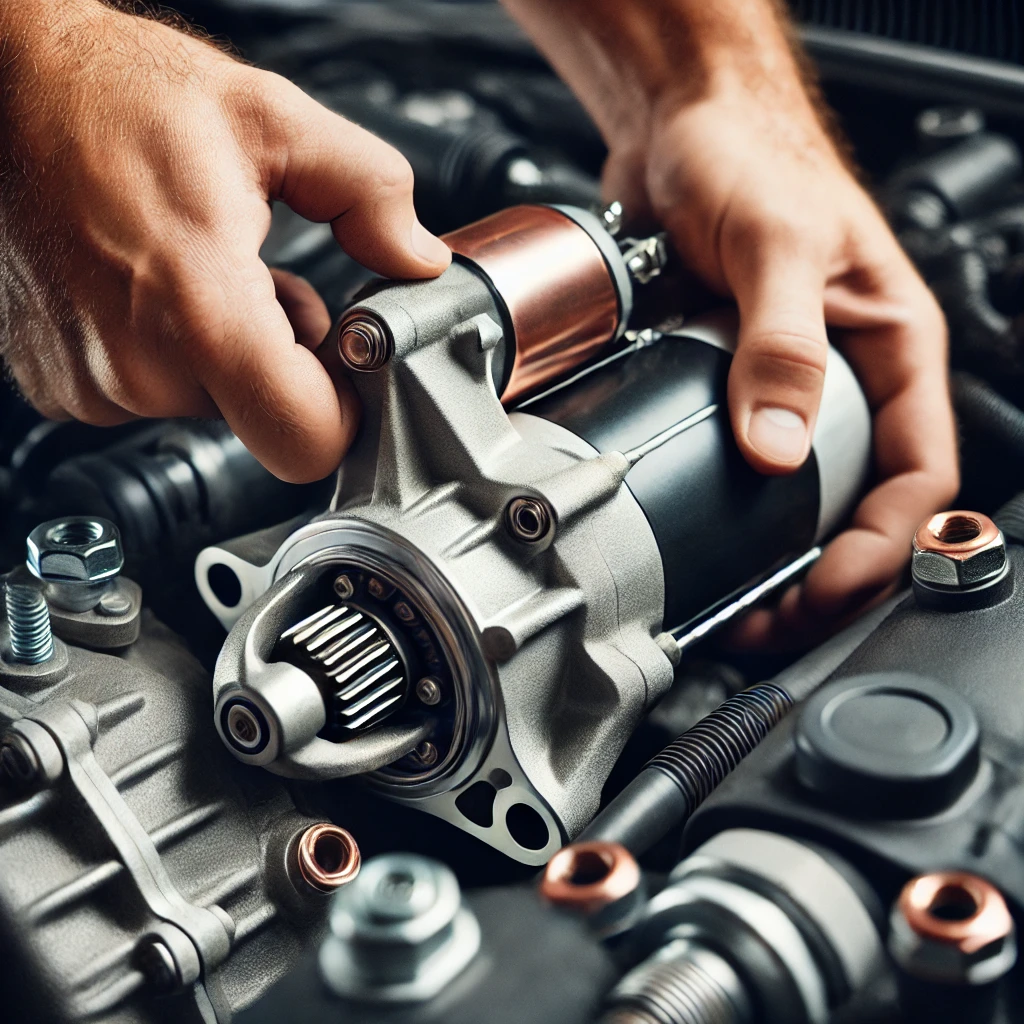A failing starter motor prevents your car from starting, making diagnosis and replacement essential. This guide explains the troubleshooting process and how to replace a faulty starter motor.
Diagnosing a Starter Motor Problem
Before replacing the starter, confirm the issue with these steps:
- Check the Battery: Ensure it’s charged; a weak battery can mimic starter issues.
- Test Electrical Connections: Loose or corroded wires can prevent current flow.
- Tap the Starter Motor: Sometimes, a stuck solenoid can be temporarily fixed by lightly tapping the starter while turning the key.
- Use a Multimeter: Measure voltage at the starter; if power is present but the motor doesn’t engage, it’s faulty.
Steps for Starter Motor Replacement
- Park the Car Safely: Use jack stands if needed for under-vehicle access.
- Disconnect the Battery: Prevents electrical hazards.
- Locate and Remove the Starter: Unbolt and detach electrical connections.
- Install the New Starter: Secure in place and reconnect all wiring.
- Reconnect the Battery and Test: Ensure smooth engine startup.
Cost Breakdown
- DIY Replacement Cost: Around £100 to £200 for the part.
- Professional Repair: Can cost £250 to £500 including labor.
A bad starter can be confused with battery or alternator issues, so proper diagnosis is crucial before replacement.

